Nara deer shikadamari phenomenon continues to baffle visitors at Nara park
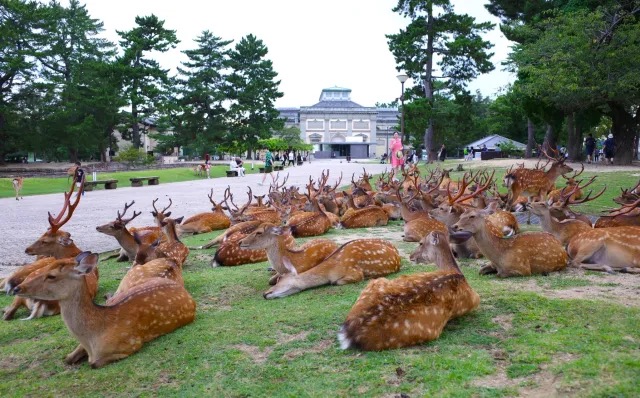
A summertime mystery that even experts are unable to solve.
Ever since 2019, our Nara-based reporter K. Masami has been investigating a bizarre pattern of deer behaviour in Nara Park. Known as “shikadamari“, which literally translates to “deer pool“, this phenomenon occurs in summer, when the deer gather in large numbers to sit on the grass outside the Nara National Museum.
The gathering of animals occurs with such precise regularity, in terms of both the time of year and the time of day when it occurs, that logic says there has to be some sort of reason for it, yet even experts at the Nara Deer Preservation Foundation that looks after the animals can’t explain why it happens.
That hasn’t stopped Masami from doing her best to solve the mystery on her own, and as the deer numbers at the gathering spot tend to be largest from mid-July to early August, she headed down there on the weekend to assess the situation. The gatherings peak at around 6:30 p.m. and last until 7 p.m., and when she arrived just before 6 p.m., a number of deer had already assembled at the usual spot.

The number of deer wasn’t as large as what she’s seen in the past, but it was definitely more than 2023, when there were only around 20 deer.
▼ Last year’s gathering was more like a picnic than a crowd.
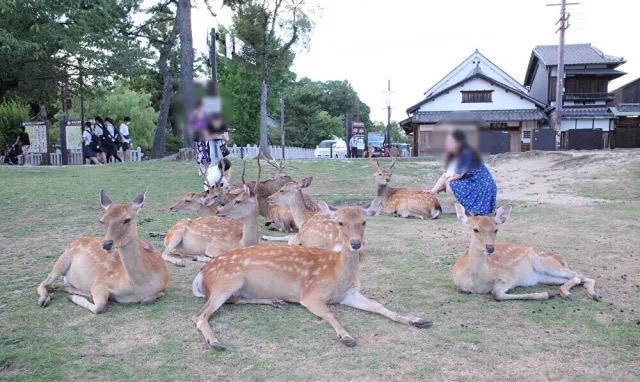
This year’s numbers weren’t anything like the mass gatherings that occurred before the pandemic, with around 600 deer at this spot back in 2019, but it is in keeping with the general decline that’s been occurring since then. Still, Masami hoped more animals might arrive closer to 6:30 p.m., so she took a stroll over to the area behind the museum, near Kintetsu Nara Station, where she found another group of deer, seemingly split into three groups.
▼ Unlike the “deer pool”, though, where the animals all sit together, looking like a pool of deer, most were standing.
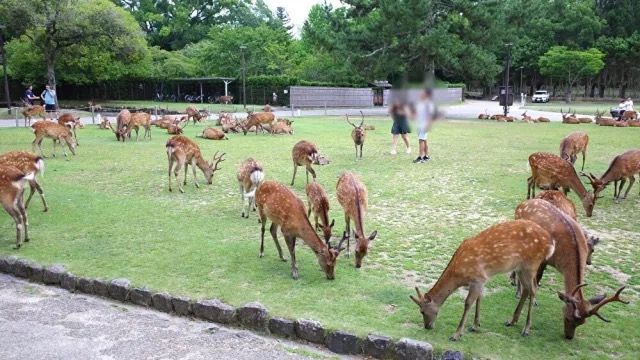
Returning to the front of the museum, she saw the numbers hadn’t increased at all — the same animals were there, looking relaxed and happy to be basking in the glow of the evening.
▼ Some were even lying with their heads on the grass.
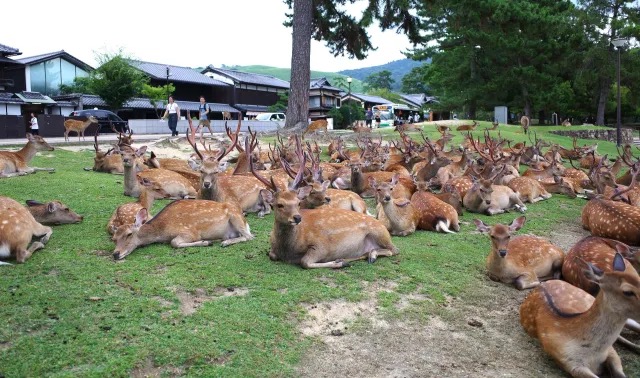
As Masami mulled over the possible reasons for the relatively small summer gathering, the animals then surprised her by getting up and walking away, seemingly to meet up with another group, where they all walked off into the distance together.
What made this so strange was the fact that they did this much earlier than usual, with the numbers gradually disappearing from 6:30 p.m., so that by 7 p.m., this was all that was left of the gathering.
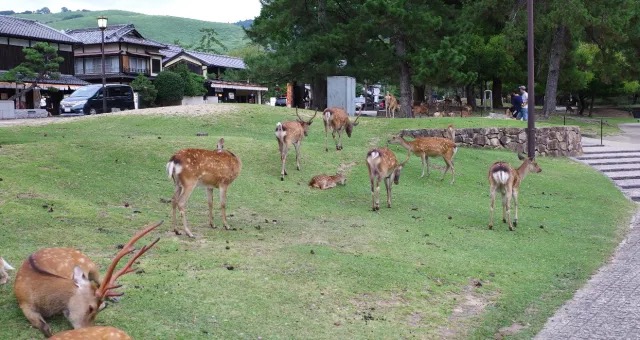
In previous years, Masami suspected there may have been some correlation between the deers’ behaviour and either weather patterns or visitor numbers, but with this being a relatively average year in terms of weather and visitors, she’s now even more baffled by what’s going on. She says it didn’t even seem like the deer were gathering this summer at all, because not only were they small in number, they were short on time too, simply dropping to their knees for what seemed like a few minutes, rather than their usual leisurely hour.
So yet again, as Masami left the park, there was only one thing she was certain of — this is a mystery that remains unsolved. Until she learns to communicate with the deer, she may never know what their motives are for meeting at this particular spot every summer. Could it be the view? The coolness of the grass here compared to other areas of the park? The sense of camaraderie after a hard day of hunting crackers?
Rather than feel confounded by the mystery of the shikadamari, these are questions Masami is keener than ever to answer, so rest assured, she’s still on the case — and hopefully next year, she’ll have some answers!
Photos © SoraNews24
● Want to hear about SoraNews24’s latest articles as soon as they’re published? Follow us on Facebook and Twitter!
Credit:

0 comments: